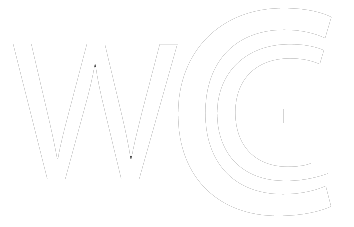Is Arweave's Computing Platform AO the Future? Mainnet Launch Explained

Arweave, a pioneer in decentralized storage, has officially launched the mainnet for AO, its high-performance distributed computing platform. Dubbed a hyperparallel computer, AO aims to revolutionize on-chain computation by introducing a parallelized processing environment. With Arweaves immutable storage as its foundation, AO is set to offer a scalable and permanent decentralized computing infrastructure.
Beyond its technical advancements, AOs native token (AO) has now become transferable, marking a significant milest one in the ecosystems growth. The launch introduces new economic incentives, including token distributions for AR holders and asset bridges. But the big question remains: Will AO redefine decentralized computing and drive Arweaves ecosystem to new heights? Lets analyze its impact, potential, and future price trajectory.
What Makes AOs Technology a Game-Changer?
AOs main innovation is its ability to function as a hyperparallel computing environment, allowing multiple on-chain computations to process simultaneously. Unlike traditional blockchain networks that execute transactions sequentially, AOs architecture enables parallelized execution, significantly improving efficiency and scalability.
One of AOs key strengths is its reliance on Arweaves decentralized data layer, ensuring that all computations are permanently stored and accessible. This guarantees data integrity and availability, making AO an attractive solution for developers building decentralized applications (dApps), particularly AI-driven autonomous agents.
The integration of AO within Arweaves ecosystem is expected to create a self-reinforcing cycle, where increased usage of AO drives demand for Arweaves permanent storage solutions. This dynamic could boost Arweaves utility and network adoption, potentially influencing the price trajectory of AR tokens.
How Will AOs Tokenomics Shape Its Growth?
The launch of AOs mainnet is accompanied by the official release of its native token (AO), separate from Arweaves AR token. With a maximum supply of 21 million, AOs tokenomics closely resemble Bitcoins scarcity-driven model. However, instead of mining, AO tokens were initially minted and distributed through a fair launch model, with allocations based on participation in the testnet phase and AR token holdings.
The distribution breakdown is as follows:
- 36% of AO tokens will be allocated to AR holders over time to incentivize long-term participation.
- 64% is reserved for economic incentives, focusing on asset bridging, including rewards for users who deposit stablecoins like DAI and stETH into AOs ecosystem.
One of the most intriguing aspects of AOs tokenomics is its message-passing incentive system, which secures transactions within the network. By rewarding attestations, AO ensures that its distributed computing framework remains efficient, secure, and decentralized.
The substantial $700 million in assets pre-bridged to AO before the mainnet launch suggests that institutional and retail investors alike see potential in AOs economic model. But will this translate into long-term adoption?
Will AO Drive Demand for Arweaves Storage Services?
A major component of AOs success will be its impact on Arweaves storage demand. Since AO is built on Arweaves immutable data layer, every computational process generates permanent storage transactions, reinforcing Arweaves value proposition.
Inversely, Arweave benefits from AOs ecosystem expansion, as dApps and on-chain autonomous AI agents deployed within AO will require long-term, tamper-proof storage. If AO gains traction among developers and enterprises, it could significantly increase Arweaves adoption rate, thereby strengthening the utility and demand for AR tokens.
This interdependence between AO and Arweave could lead to positive price action for AR, particularly if AO establishes itself as a leading decentralized computing platform.
What Are the Potential Risks and Challenges for AO?
Despite AOs promising technological advancements, several challenges could impact its adoption and long-term viability.
- Competition from Other Decentralized Computing Networks: Projects like Ethereums Layer 2 solutions, Solana, and emerging decentralized cloud computing networks (e.g., Akash Network) are already competing in the on-chain computing space. AO will need strong developer adoption to differentiate itself and capture market share.
- Regulatory Uncertainty Surrounding AO Tokens: With the transferability of AO tokens now live, regulatory scrutiny over token distributions and bridging incentives could pose risks. Similar to how governance tokens in DeFi projects have faced compliance challenges, AOs economic incentives might attract regulatory attention.
- Adoption of Parallelized On-Chain Computing: AOs hyperparallel computing model introduces a novel paradigm, but widespread adoption remains uncertain. Developers need to understand and leverage AOs unique capabilities to build scalable dApps. Without a clear developer onboarding strategy, adoption could face delays.
Despite these risks, AOs fair launch tokenomics and integration with Arweaves infrastructure provide strong fundamental value, making it an interesting project to watch.
Whats Next for AO and Arweaves Ecosystem?
The AO mainnet launch marks the beginning of a new phase for Arweaves ecosystem. Over the next few months, key factors will determine whether AO gains traction or fades into obscurity:
- Developer Adoption How quickly developers build and deploy dApps on AO will be critical. If AI coordination tools and high-performance dApps thrive on AO, its growth could accelerate.
- Token Market Performance Now that AO tokens are transferable, market demand and liquidity will influence their valuation. Will they attract speculative interest or long-term holders?
- Arweave Integration Strength The stronger the link between AO and Arweaves storage solutions, the more likely ARs demand will rise in parallel with AOs success.
If AO achieves strong network effects and developer engagement, it could become a major player in decentralized computingsolidifying Arweaves position as a backbone for blockchain-based data storage.
Will AO Revolutionize Decentralized Computing?
AOs mainnet launch introduces a powerful new computing model, leveraging parallel processing and permanent storage to reshape the way decentralized applications function. With its fair-launch tokenomics, AI-driven use cases, and Arweave-backed data infrastructure, AO has the potential to disrupt the decentralized computing sector.
However, its success will ultimately depend on developer adoption, real-world utility, and sustained demand for its token ecosystem. If AO overcomes these hurdles, it could become a cornerstone of Web3 computing, driving value not only to AO tokens but also to Arweaves broader ecosystem.
With $700 million pre-bridged before launch and a strong technical foundation, AO is positioned for explosive growthbut will it live up to the hype or struggle against competition? The coming months will provide the answer.
Read more: https://cryptoticker.io/en/arweave-ao-mainnet-launch-will-it-revolutionize-decentralized-computing/
Text source: CryptoTicker










